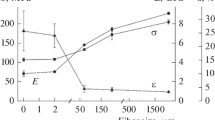Summary
Among others material problems are come to the fore in endoprothetic with growing biochemical knowledge, also because of the realisation that in different parts of the same prothesis functionally different mechanical demands must be set.
Technological progress in carbon production has lead to the development of a spectrum of different carbon specialities with various mechanical properties. In orthopaedic surgery of endoprothetic high strength isotropic carbon, impregnated carbon and fibrereinforced carbon-carbon-composites are of particular interest, because of their physical properties and unchanged favourable chemical and biological properties of carbon.
Thereby it is on one side a question of carbon material with extraordinary tribological qualities, on the other side of carbons with nearly isoelastic behaviour towards the bone, respectively with equal quotient of breaking strength and young's modulus.
Therefore in future the manufacture of components with functional approbiate material using the same basic material carbon seems to be possible for the production of endoprothesis with different working parts.
Zusammenfassung
Mit zunehmenden biomechanischen Kenntnissen sind in der Endoprothetik unter anderem werkstofftechnische Probleme weiter in den Vordergrund gerückt, nicht zuletzt auch wegen der Erkenntnis, daß an unterschiedliche Teile der gleichen Prothese funktionsgebunden durchaus unterschiedliche mechanische Anforderungen gestellt werden müssen.
Technologische Fortschritte in der Kohlenstoffherstellung haben zur Entwicklung einer Palette von verschiedenen Kohlenstoffspezialitäten mit differierenden mechanischen Eigenschaften geführt. Für die orthopädischchirurgische Endoprothetik sind wegen ihrer physikalischen Eigenschaften bei unverändert günstigem chemischen und biologischen Verhalten insbesondere hochdichte, hochfeste Spezialgraphite, imprägnierte Kohlenstoffe und kohlenstoffaserverstärkte Kohlenstoff-Verbundkörper von Interesse. Es handelt sich dabei einerseits um Kohlenstoffwerkstoffe mit hervorragenden tribologischen Eigenschaften, andererseits um Kohlenstoffe, die dem normalen Knochen gegenüber annähernd isoelastisches Verhalten zeigen bzw. einen entsprechenden Quotienten aus Biegebruchfestigkeit und E-Modul besitzen. Für die Herstellung von Endoprothesen mit unterschiedlichen Funktionsteilen erscheint damit für die Zukunft die Fertigung der Einzelteile aus jeweils funktionsgerechtem Material unter Verwendung des gleichen Grundmaterials Kohlenstoff möglich.
Similar content being viewed by others
Literatur
Benson, J.: Presurvey of Biomedical Applications of Carbon. Rocketdyne, Contract Nas-8-5604, North American Rockwell 1969
Bokros, J. C.: Deposition, Structure and Properties of Pyrolytic Carbon. Chemistry and Physics of Carbon, pp. 1–118. New York: M. Dekker 1969
Bokros, J. C., La Grange, L. D., Schoen, F. J.: Control of Structure of Carbon for Use in Bioengineering. Chemistry and Physics of Carbon, pp. 103–171. New York: M. Dekker 1973
Dustoor, M. R., Hirschhorn, J. S.: Porous Surgical Implants. Powd. Metall. Int. 4, 183–188 (1973)
Ezekiel, H. M.: High Strength, High Modulus Graphite Fibres. Technical Report AFML-TR-70-100. Air Force Materials Laboratory. Wright-Patterson Air Force Base, Ohio 1971
Fitzer, E., Fiedler, A. K., Müller, D. J.: Zur Herstellung von Kohlenstoffasern mit hohem Elastizitätsmodul und hoher Festigkeit. Chem.-ing.-Techn. 16, 923–932 (1971)
Fitzer, E., Terwiesch, B.: Kohlenstoffaserverstärkte Kohlenstoffkörper. Z. Werkstofftechnik 2, 53–60 (1974)
Hüttinger, K. J.: Kinetik der Flüssigphasenpyrolyse und Mechanismus der Mesophasentransformation von technischen Aromatengemischen. Habil.-Schrift, Universität Karlsruhe 1972
Kotlensky, W. V.: Deposition of Pyrolytic Carbon in Porous Solids. Chemistry and Physics of Carbon, pp. 173–262. New York: M. Dekker 1973
Mittelmeier, H.: Implantatwerkstoffe in der Orthopädie. Med. Orthop. Techn. 4, 85–86 (1976)
Ritter, G., Grünert, A., Schweikert, C. H.: Experimentelle Untersuchungen über die elastische Druckverformung des Knochenschaftes. Z. Orthop. 111, 791–795 (1973)
Smith, W. H., Leeds, D. H.: Pyrolytic Graphite. Mod. Mater, pp. 139–221. New York: Academic Press 1970
Stanitski, C. L., Mooney, V.: Osseous Attachment to Vitreous Carbons. J. Biomed. Mater. Res. Symp. 4, 97–108 (1973)
Weber, U.: Biokompatibilität von Kohlenstoffen. Unveröff. Vortrag BMFT, Bonn 1976
Yamada, S.: A Review of glass-like carbons. DCJC Report 68-2, Batelle Memorial Institute, April 1968
Author information
Authors and Affiliations
Additional information
Die der Veröffentlichung zugrunde liegenden Arbeiten wurden vom Bundesministerium für Forschung und Technologie (Kennzeichen: MT 02 63) gefördert
Rights and permissions
About this article
Cite this article
Weber, U., Auff'm Ordt, M., Rettig, H. et al. Mechanische Aspekte des Kohlenstoffes als Mehrzweck-Implantatwerkstoff in der orthopädischen Chirurgie. Arch orthop Unfall-Chir 89, 169–177 (1977). https://doi.org/10.1007/BF00415341
Received:
Issue Date:
DOI: https://doi.org/10.1007/BF00415341




